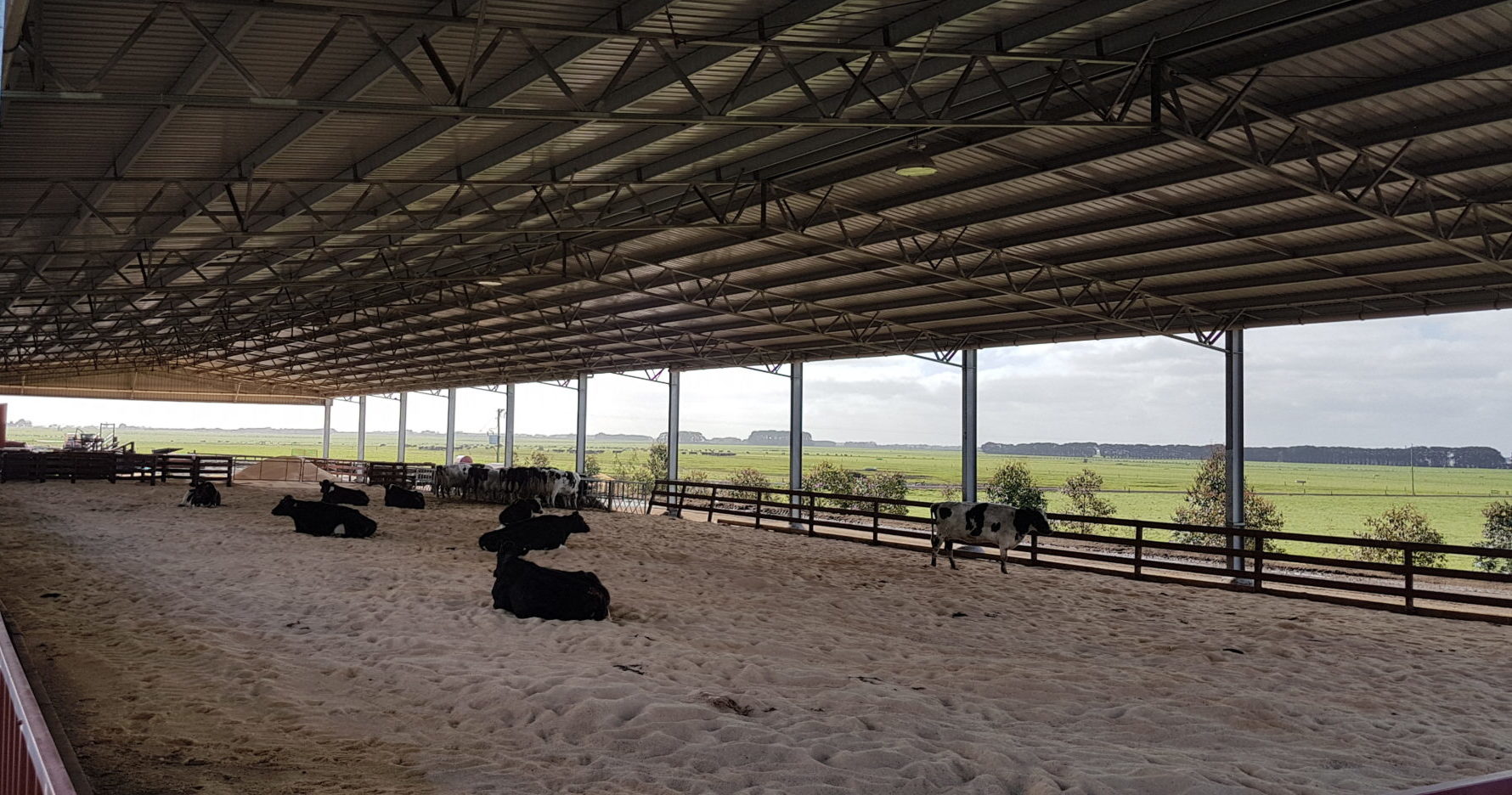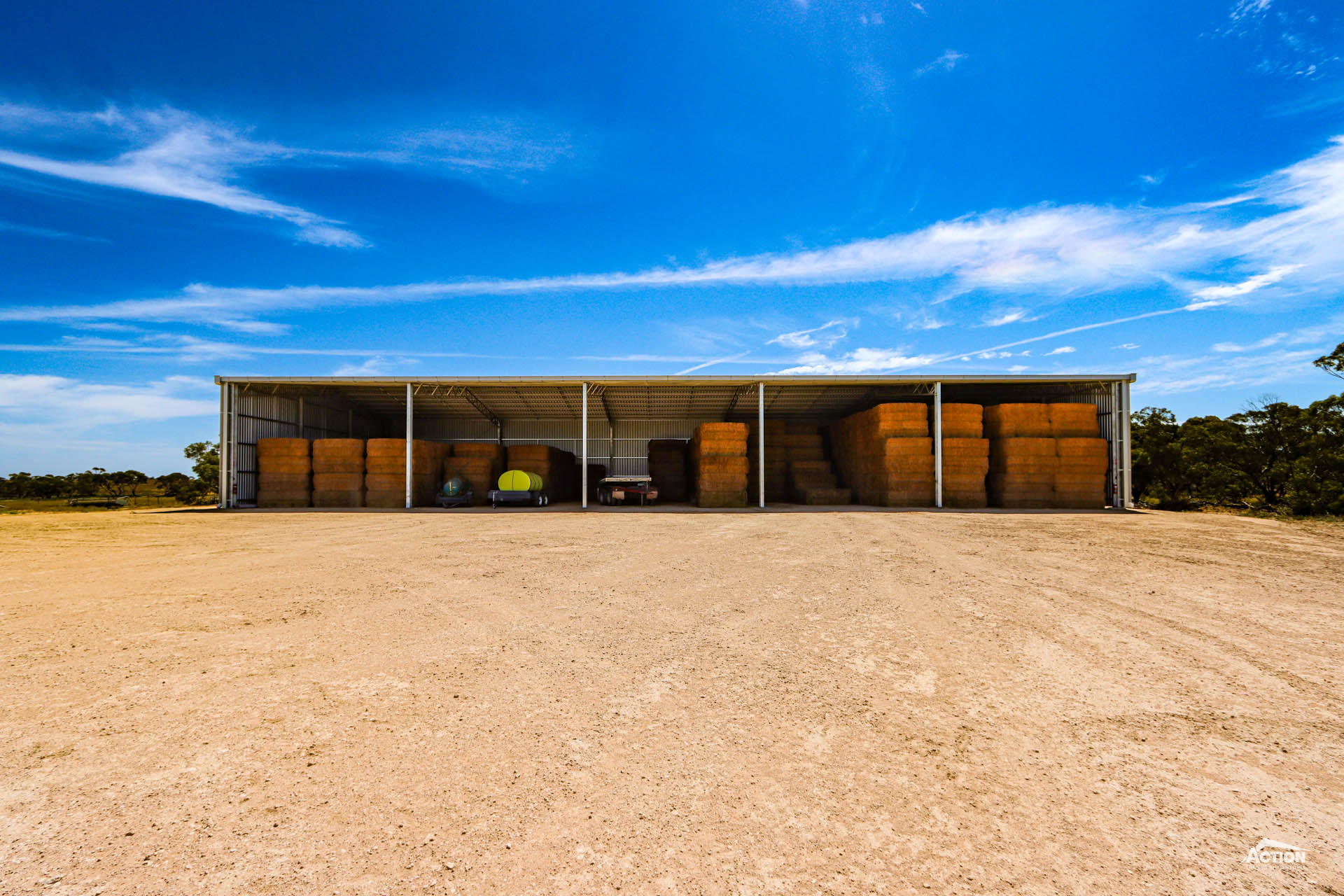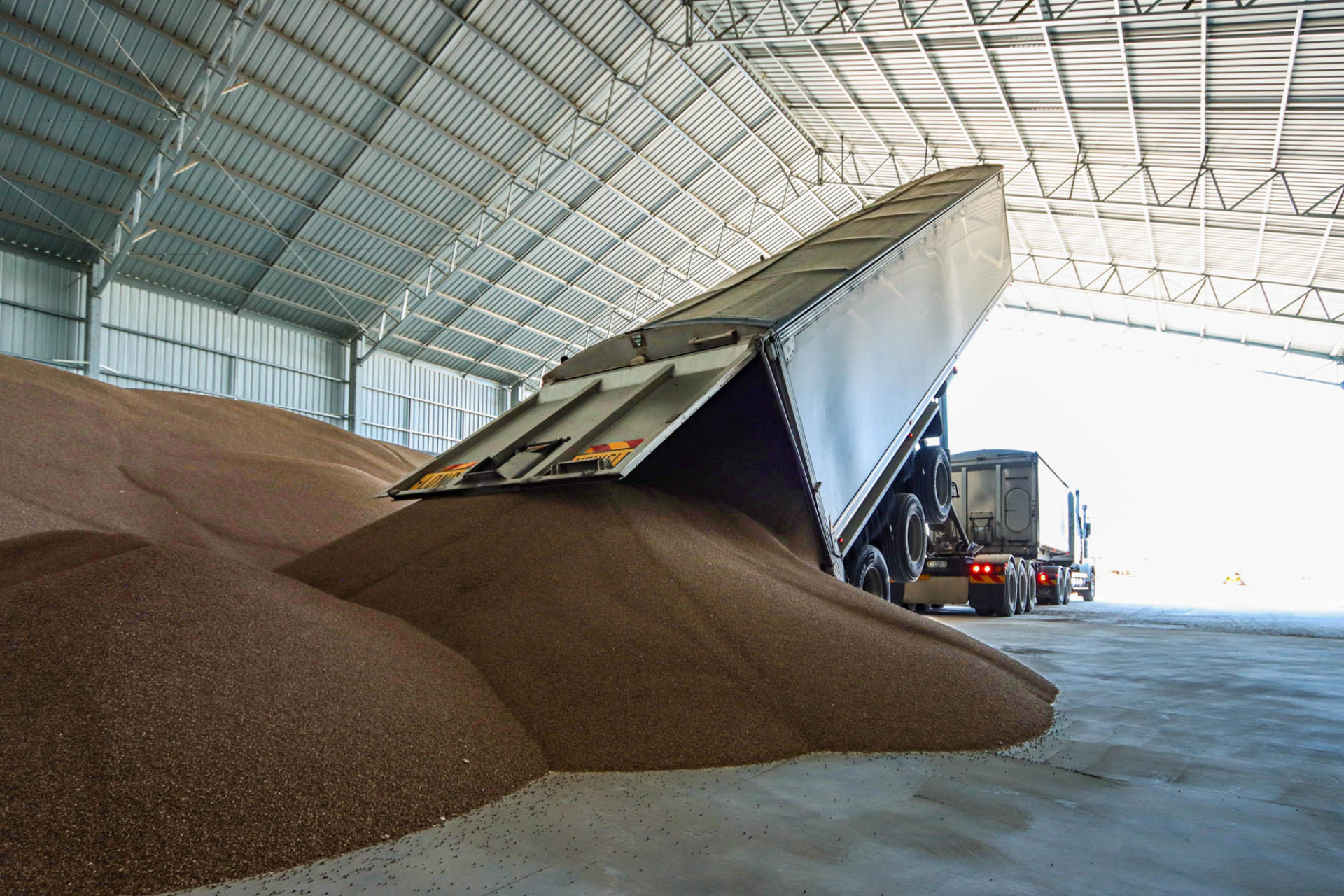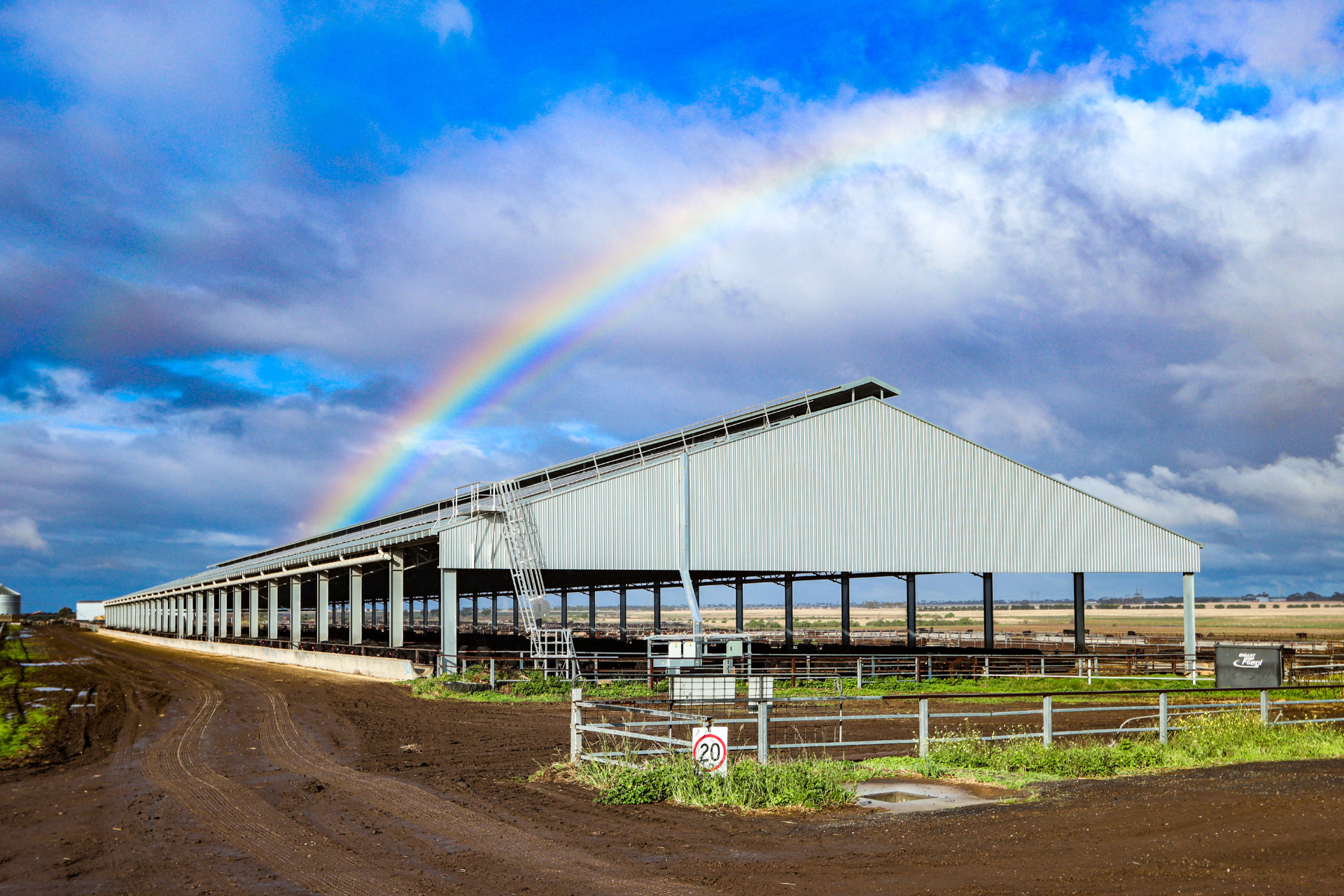Cattle feedlot covers and calving shelters allow cattle to put more of their energy into thriving rather than merely surviving during weather extremes. Here are five things to remember when designing your feedlot cover or calving shelter project.
Protection from wind, sun and rain
As we discuss in our blog, how weather affects cattle, although healthy, acclimatised cattle are able to tolerate a wide range of temperatures, heat stress can have implications such as decreased weight gain or loss in milk production, while cold stress or hypothermia can contribute to morbidity and mortality in newborn calves.
Providing shelter and protection from the elements for your cattle help them maintain a stable core body temperature without having to expend any extra energy.
Calving shelters or calf sheds with partly clad walls or gable infills help provide protection from prevailing wind and rain while still allowing airflow and ventilation – another essential which we discuss later on.
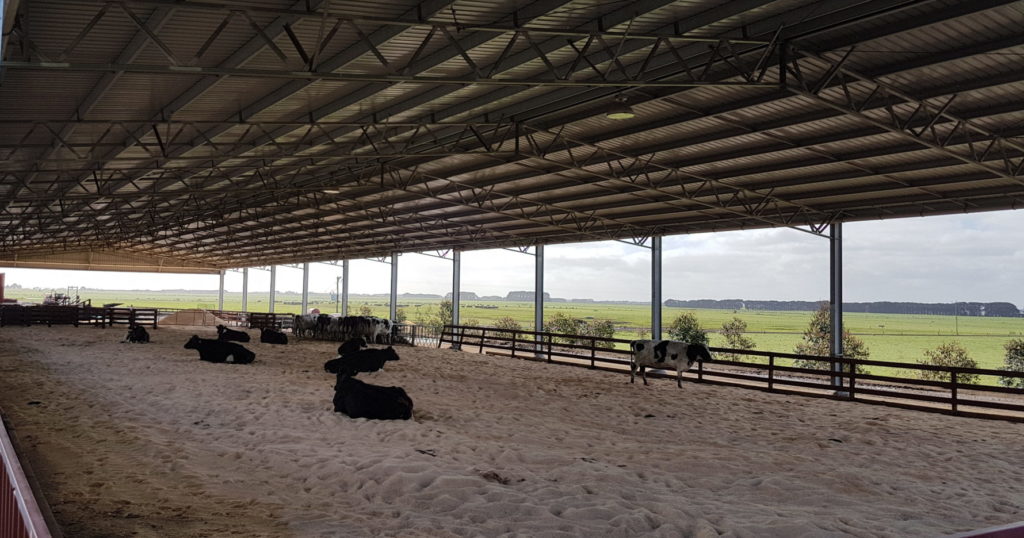
At least 11m² per cow is required for permanently housed cows in a loafing type barn or shelter.
Space for animal movement and behavior
It is one thing to have shelter, but it’s vital that the shelter provides enough room for cattle to move around and express their usual behavior patterns – this is particularly important during calving. Room should also be allowed for workers to be able to move in the calving shelter without adding further stress to the cows.
Feedlot covers will also need to allow room for small machinery that will be accessing the cover.
Space is also important in both feedlot covers and calving shelters for maintaining healthy airflow between animals and for avoiding heat stress on hot days.
Access to clean water
Food, water and effective shelter are the three primary considerations for any livestock. No matter the climate, water is an essential aspect of keeping cattle under roof.
In hot weather dairy cattle can drink anywhere from 120 to 150 litres of water each day – a number that can increase by as much as 80% on days over 35°C.
So, it’s imperative that you plan your water tanks and water collection system in the design stage of your cover – and factor in details like the maximum number of cattle that will be under roof at one time.
A feedlot cover also has the potential to harvest a significant amount of water so make sure your water collection has adequate storage capacity.
Dry and drainable flooring
Drainage is an important consideration so that your cattle aren’t left standing on moist ground – mud and manure can lead to lameness, scouring and increased risk of Johne’s disease in young calves. Taking measures to maintain a high level of cleanliness and general hygiene is another crucial aspect of this
The Action team are available to discuss details like site drainage for your project to make sure every aspect is covered.
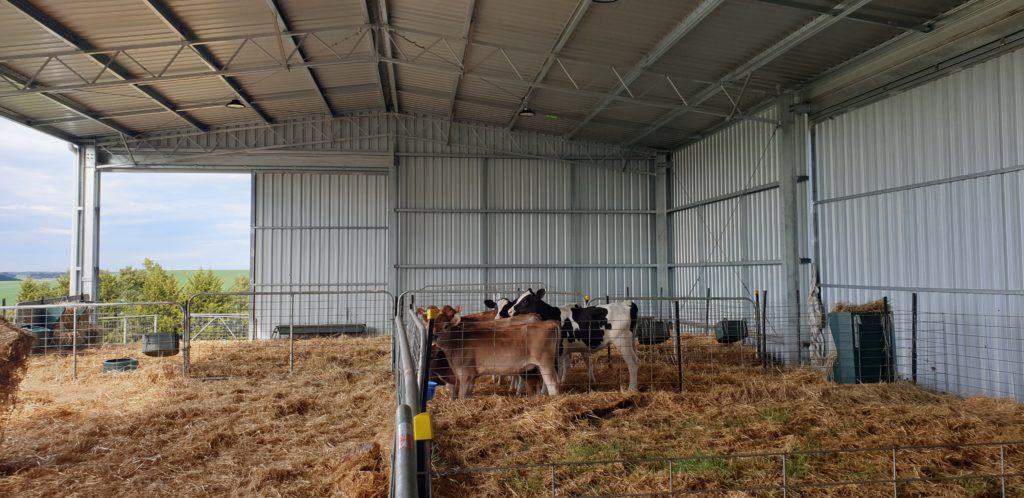
Ventilation
Ventilation is a high priority when it comes to designing a roof over a feedlot.
A steep pitch of 1:4 is the generally accepted standard and can help to maintain a healthy air flow in a feedlot cover and will aid in keeping both temperatures and moisture at reasonable levels.
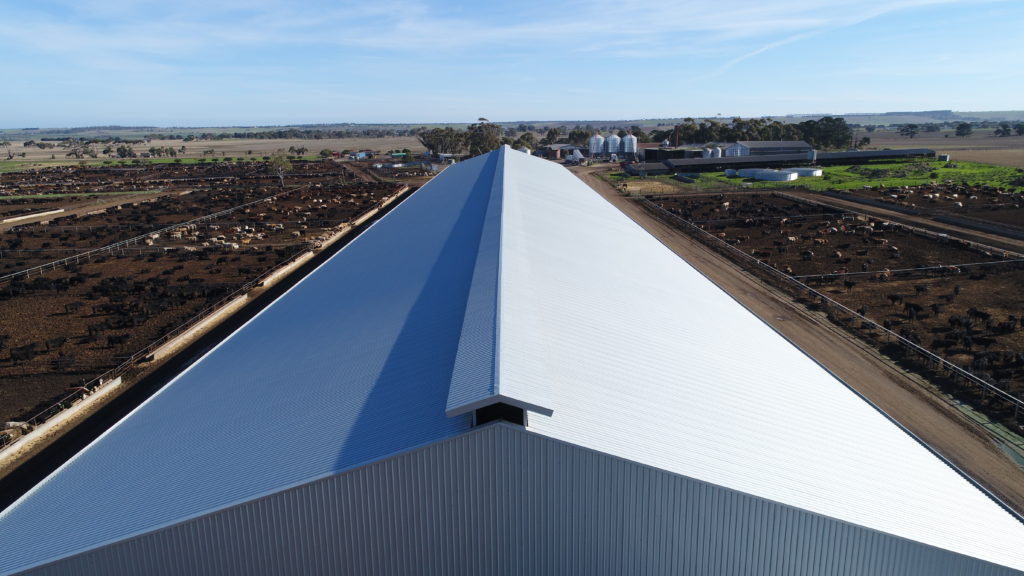
A common feature on many of our feedlot covers are ridge vents. Ridge vents allow hot air to escape out through the ridge of the shed helping to maintain a stable temperature and lessen humidity.
We recommend having a chat with one of our building consultants to plan out the air flow and ventilation for your project, including any doors, windows, partial cladding and vents that may need to be included.

